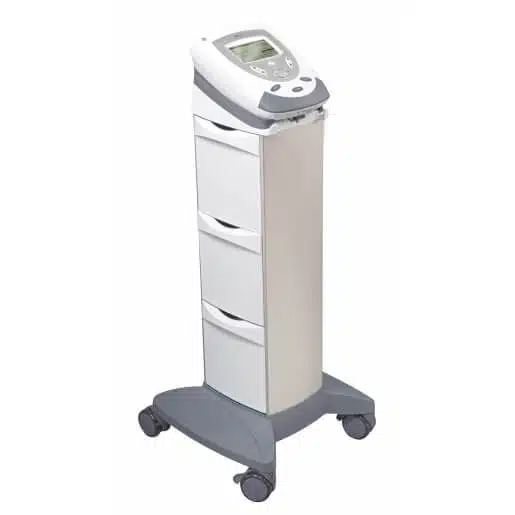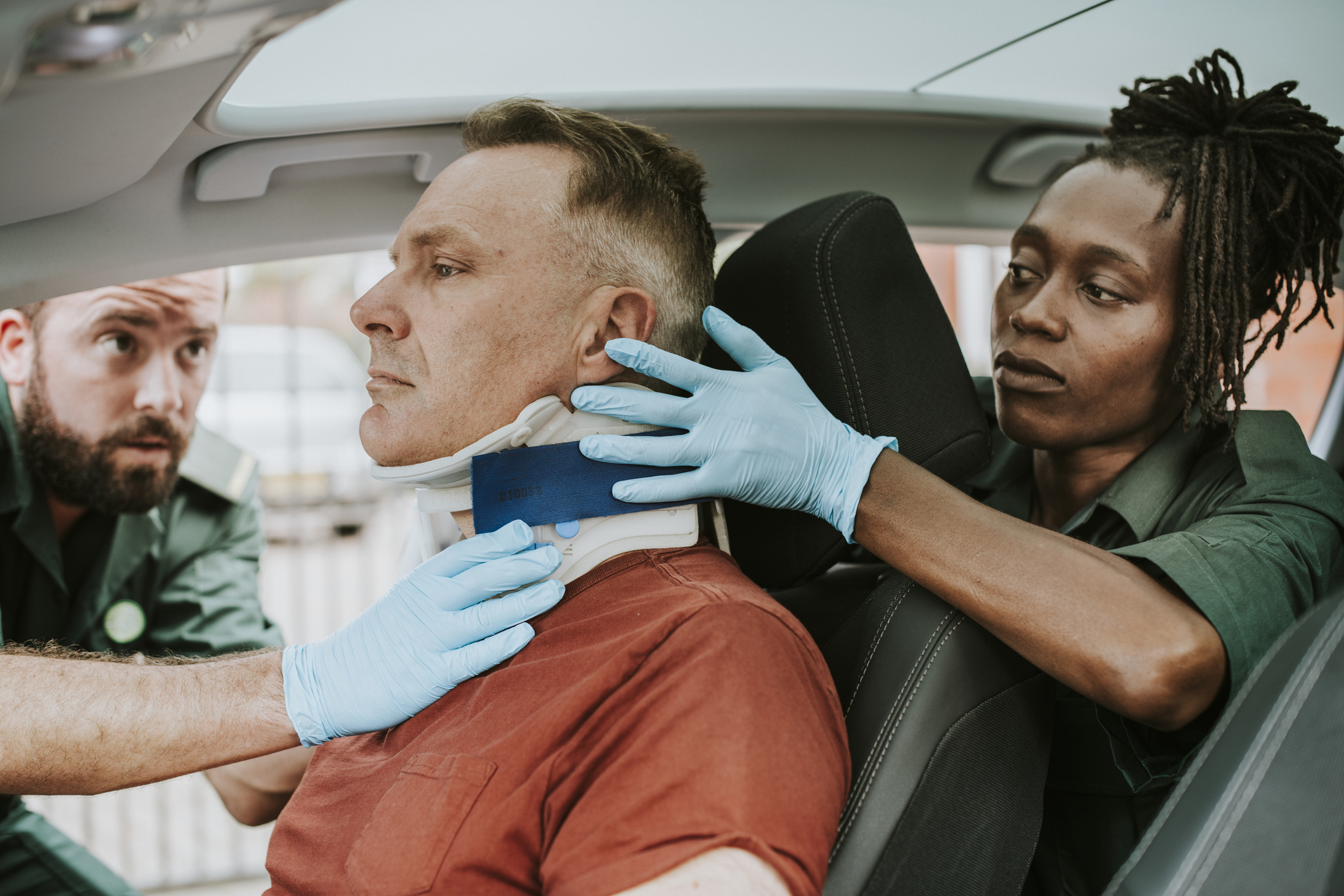Motor Vehicle Accident Injuries: 5 Important Ways A Rehab Clinic Can Prepare For Them
In this article, we will discuss the 5 most common types of motor vehicle accident injuries and the role rehab clinics can play in treating these injuries. We will then suggest 5 key steps a physiotherapy or rehab clinic can take to most effectively treat these injuries.
5 Key Types of Motor Vehicle Accident Injury & The Role Of Rehab Clinics In Their Treatment
Motor vehicle accidents (MVAs) can result in a wide range of injuries, varying in severity. Here are the five most common types of motor vehicle accident injuries and the role that rehabilitation or physiotherapy clinics can play in their treatment:
Whiplash
- Description: Whiplash is a neck injury caused by a sudden, forceful back-and-forth movement of the neck, commonly occurring in rear-end collisions. Symptoms include neck pain, stiffness, headaches, and sometimes dizziness or blurred vision.
- Role of Rehabilitation/Physiotherapy:
- Pain Management: Techniques such as manual therapy, ultrasound, or electrical stimulation can help reduce pain and inflammation.
- Restoring Mobility: Stretching and strengthening exercises are used to restore range of motion and improve neck stability.
- Posture Education: Patients are taught proper posture and ergonomic practices to prevent future strain.
Fractures
- Description: Fractures, particularly in the ribs, arms, legs, or collarbone, are common due to the impact of a collision. These motor vehicle accident injuries can range from simple fractures to complex, compound breaks.
- Role of Rehabilitation/Physiotherapy:
- Immobilization and Healing: Initially, physiotherapists may assist with immobilization techniques and recommend assistive devices like slings or braces.
- Restoring Function: Once healing begins, targeted exercises help restore strength, flexibility, and function to the affected area.
- Preventing Complications: Rehabilitation focuses on preventing complications such as muscle atrophy or joint stiffness.
Soft Tissue Injuries
- Description: These include sprains, strains and contusions to muscles, ligaments, and tendons. Common areas affected are the back, shoulders, and knees.
- Role of Rehabilitation/Physiotherapy:
- Reducing Swelling and Pain: Modalities like ice therapy, compression, and gentle mobilization are used initially.
- Rehabilitation Exercises: Gradual introduction of stretching and strengthening exercises helps restore function and prevent long-term issues.
- Scar Tissue Management: Techniques like massage and myofascial release can help break down scar tissue and improve mobility.
Traumatic Brain Injuries (TBI)
- Description: TBIs range from mild concussions to severe brain damage, often caused by the head striking an object or sudden acceleration/deceleration forces.
- Role of Rehabilitation/Physiotherapy:
- Cognitive Rehabilitation: For mild to moderate TBIs, cognitive exercises help improve memory, attention, and problem-solving skills.
- Vestibular Therapy: For patients experiencing dizziness or balance issues, vestibular rehabilitation can help restore equilibrium.
- Physical Recovery: Strengthening and coordination exercises are used to address physical deficits caused by the injury.
Spinal Cord Injuries
- Description: These are among the most severe motor vehicle accident injuries, potentially leading to partial or complete paralysis, depending on the location and severity of the injury.
- Role of Rehabilitation/Physiotherapy:
- Mobility Training: For partial injuries, physiotherapists work on improving mobility through gait training and strengthening exercises.
- Adaptive Techniques: For severe injuries, the focus may shift to teaching patients how to use wheelchairs or other assistive devices.
- Pain Management: Techniques like electrical stimulation or hydrotherapy can help manage chronic pain associated with spinal cord injuries.
General Role of Rehabilitation/Physiotherapy Clinics:
- Personalized Treatment Plans: Clinics assess each patient’s unique needs and develop tailored treatment plans.
- Multidisciplinary Approach: Collaboration with other healthcare professionals (e.g., occupational therapists, psychologists) ensures comprehensive care.
- Patient Education: Educating patients on injury prevention, self-management techniques, and lifestyle modifications is a key component of rehabilitation.
- Emotional Support: Rehabilitation clinics often provide emotional and psychological support, helping patients cope with the trauma and challenges of recovery.
In summary, rehabilitation and physiotherapy clinics play a crucial role in the recovery process following motor vehicle accident injuries, helping patients regain function, reduce pain, and improve their overall quality of life.
5 Important Steps A Rehab Clinic Can Take To More Effectively Treat Motor Vehicle Accident Injuries
To effectively treat motor vehicle accident (MVA) injuries, rehabilitation clinics must implement structural and management changes that enhance patient care, streamline operations, and improve outcomes. Here are the five most important changes:
Multidisciplinary Team Approach
- Structural Change: Establish a multidisciplinary team that includes physiotherapists, occupational therapists, psychologists, pain management specialists, and social workers.
- Management Change: Implement regular team meetings and case conferences to discuss patient progress and adjust treatment plans collaboratively.
- Impact: This approach ensures comprehensive care, addressing not only the physical but also the psychological and social aspects of recovery. It leads to more holistic and effective treatment outcomes.
Advanced Diagnostic and Treatment Equipment

- Structural Change: Invest in state-of-the-art diagnostic tools (e.g., MRI, CT scans) and treatment equipment (e.g., hydrotherapy pools, robotic gait trainers, and electrical stimulation devices).
- Management Change: Train staff extensively on the use of new equipment and integrate these tools into standard treatment protocols.
- Impact: Advanced equipment can provide more accurate diagnoses and more effective treatment of motor vehicle accident injuries, speeding up recovery times and improving patient outcomes.
Personalized Treatment Plans
- Structural Change: Develop a system for creating highly personalized treatment plans based on detailed initial assessments, including physical, psychological, and social evaluations.
- Management Change: Use electronic health records (EHR) to track patient progress and update treatment plans in real-time. Ensure that all team members have access to these records.
- Impact: Personalized treatment plans ensure that each patient receives care tailored to their specific needs, which can lead to better adherence to treatment and faster recovery.
Patient Education and Support Programs
- Structural Change: Create dedicated spaces and resources for patient education, including workshops, informational materials, and support groups.
- Management Change: Hire or train staff to lead educational sessions and support groups. Schedule regular sessions as part of the treatment plan.
- Impact: Educated patients are more likely to engage in their recovery process, adhere to treatment plans, and make lifestyle changes that support long-term health. Support groups can provide emotional comfort and reduce feelings of isolation.
Streamlined Referral and Follow-Up Processes
- Structural Change: Develop a streamlined referral system with local hospitals, primary care physicians, and specialists to ensure seamless transitions of care.
- Management Change: Implement a robust follow-up system, including automated reminders for appointments and regular check-ins via phone or telehealth platforms.
- Impact: Efficient referral and follow-up processes ensure continuity of care, reduce the risk of complications, and improve patient satisfaction. Regular follow-ups help monitor progress and make timely adjustments to treatment plans.
Additional Considerations:
- Staff Training and Development: Continuous professional development programs for staff to keep them updated on the latest treatment techniques and technologies.
- Quality Assurance Programs: Regular audits and quality assurance programs to monitor treatment outcomes and patient satisfaction, ensuring high standards of care.
- Patient-Centered Environment: Design the clinic environment to be welcoming and accessible, with amenities that cater to the needs of patients with mobility issues or other disabilities.
By implementing these structural and management changes, a rehabilitation clinic can significantly enhance its ability to effectively treat motor vehicle accident injuries, leading to better patient outcomes and overall clinic performance.







